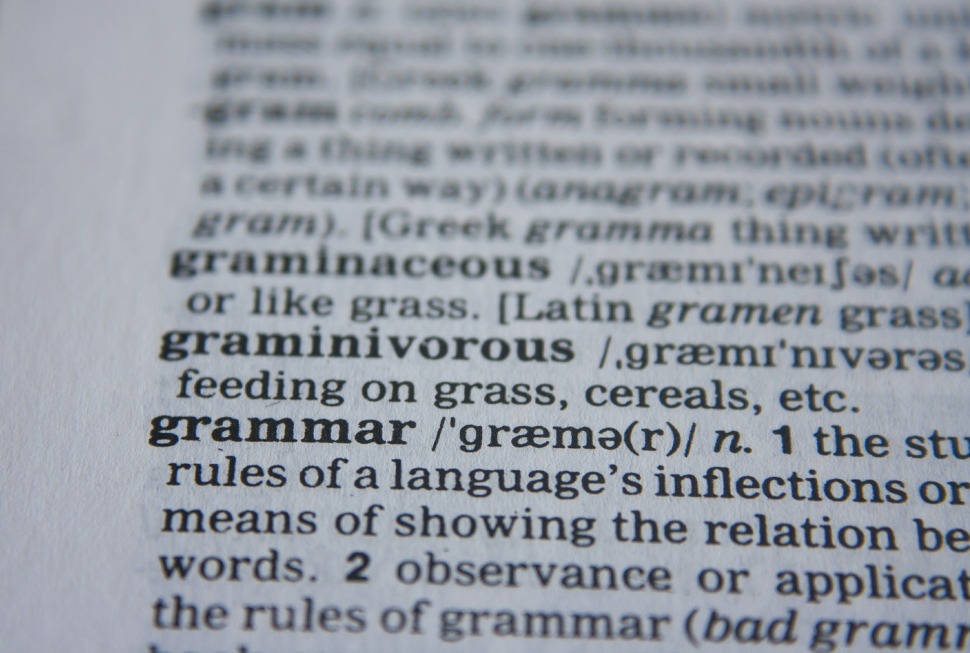Editing. It’s part of the fun right? For some people yes, for others it’s a chore. For me it’s a rollercoaster. Re-reading your first draft to find it’s utter drivel, then moving a word here and there, or deleting and rewriting to make it how you thought it would be, then reading again the next day and glowing with pleasure that you, yes you, crafted such a beautiful sentence.
As you might guess from the title, this post is about editing. I’m talking about what I do as a writer, that still sounds weird to this day, not about shipping it off to some professional. This is what I do to make my work the best it can be before it gets shredded to bits by someone with an advanced English degree who knows a lot more about grammar than I do.
About Me
I like to think I’m a storyteller. I like to think I have great ideas and I put them to the page. I hope that’s where my strength lie. Although I improve all the time, my weaknesses are grammar and typos, but I like to think those are most people’s too. This post is about the process I go through to bolster my weaknesses.
Second Draft
So you’ve written the book, put your ideas on the page, the second draft for me is about refining the story. Taking the sentences and paragraphs I thought were so wonderful as they flowed from my head to the page, finding they need much work, or more words, different words to convey what I was trying to get across. This will probably turn out to be the third, fourth and fifth draft too. I’ll fix grammar and typos along the way, but only if I stumble over them.
Story / Plot / Technical Editing
This stage is about getting your story straight, making sure the plot works, making sure your characters are consistent. I generally have to do this a lot. I re-read and read again, correcting plot holes, writing down date sequences and checked they make sense. I check and cross-check character names and theirs characteristics. So often I describe a character early on in their introduction, then come to refer to them again and I’ve changed the colour of their hair and I have to search through the text to find out what it was meant to be. It would be easier to make notes as I write, but I don’t want to break my flow. This is all straight forward enough and well within my skill set. I’m a techie after all.
The Shrinking Edit
This edit is about reviewing the whole work again. Reading and re-reading every sentence, holding a gun to its head, forcing it to plead for its right to remain and if its voice is not strong enough I blow it away, or shorten, or rewrite.
Grammatical Edit
With the story straight and the characters glowing, this is where the hard work for me really starts. This is where I try and hunt out the typos, get rid of the lazy words and pop the zit of festering bad language. I have a simple process and it goes like this:
- That – Find every instance of ‘That’ and find a way to get rid of it. If I’m not getting rid of nine out of ten instances then I know I’m not trying hard enough!
- Adverbs – Hunt out every adverb and do the same. Ever since ready ‘On Writing’ by Stephen King, one of my favourite non-fiction books, I fully embraced his thoughts that adverbs are lazy writing which should only be used sparingly. See what I did there? I listen to a lot of audio books and every time the narrator reads out an adverb it jars in my head and pulls me straight out of the world I was immersed in, often I repeat the word as I’m driving and shake my head at the worst.
- Possession – Find ‘s and make sure it’s used the right way.
- Apostrophe Use – Find all the apostrophes and make sure they’ve been used in the right way.
During writing of In The End I found ProWritingAid which helps me no end to fly through the above tasks and many more I would have little hope in finding, with great speed, making the task less of a millstone. Below is a list of editing enhancements I only find possible because ProWritingAid.
- Passive Voice – It took me a long time to understand what this meant, but now I try to avoid in my first drafts
- Incorrect Word Use – Where the wrong word has been used
- Possession – Finds where the possessive apostrophe should have been used, but wasn’t.
- Repetition – Simple typos where I’ve added a word twice
- Readability
- Many more
I then copy and paste it into MS Word and run the grammar and spell check. It often finds things, different things that ProWritingAid doesn’t even look at. Just make sure you set the language to your country!
Put the book down
One of the best pieces of advice in editing I have received is after you have done what you think is the best you can, you put it away in a metaphorical drawer and leave it there. Forget about the work and move on with something else. After a few weeks, at least two, you can pick it up and again and re-read with fresh eyes. If may find you need to start from the beginning of the editing process again if you’re not totally happy with what you see.
First Readers
For me the next stage is the dreaded first read. It’s like sending your child to nursery for the first time. You know they’ll be safe but you don’t know if they’ll have a good time. You wait and wait and gently prod to see if they’ve started reading or when they plan to. Then you wait some more, hoping for that text message commenting on which chapter they’re on or a particularly good (or bad) bit. Then you wait and finally they tell you it’s read. They give a one word appraisal and you question and the feedback comes and for my first reader it’s always, ‘but there’s loads of mistakes in it!’
You question again and it’s typos he’s found and I remind him of the phrase to use.

The Fix Up
You re-read again with the feedback in mind and make changes or not, it’s always your decision. Then you re-read again, agonising over getting a professional copy-editor to find the bloody typos!
More readers please
By now it’s either in the bin or it’s ready for the next round of testing. You find out those who have enjoyed your work before, who’ve been kind and constructive too and you test to see if they fancy doing it again. You appraise their feedback and repeat the last steps.
Professionals
Now comes the expense. You’ve got a book you’re really happy with. It’s done a few laps around the garden and it’s survived, but now it’s time to make that choice. Do you want to release or are you happy just knowing it’s in the cupboard? If you’re going to release then I take a deep breath, drain the bank balance and send it off for the big test.
I’ll leave it there for now. We’ll talk about the professional editing services in a later post. This is where I’m currently at with In The End, waiting for my feedback from the guy with the English Degrees and a whole lot more experience than me.
If you’ve got any great tips you want to share on how you edit your work, just let me know in the comments.
The Blurb!
What if you woke to find the electricity off, the internet down and the streets deserted? What if you were forced to run for your life, no longer top of the food chain? What if the government had no interest in keeping you alive, but you’d found a reason to struggle on, a new meaning to this life, those around every corner intent on hunting you down?
Could you survive the end of civilisation?
Meet Logan. That’s me. The first to believe the world had changed forever. The first to urge our friends to run. The first to kill, but not the first victim. I was the first to see for myself as nature bent before my eyes. With death surrounding, getting ever closer, they looked to me for answers.



I can edit 15 times, I’ll still miss things, I have an editor now
LikeLiked by 1 person
I feel you’re pain. If I can make money from my work I’ll get an editor too! Thanks for stopping by
LikeLike
Good luck enjoy the writing,
LikeLiked by 1 person
Somehow I can relate as my first e book is stuck in process of editing.
Sometime writing a book comes out pain instead of fun . Waiting for your book .
Good luck👍
LikeLiked by 1 person
Thank you!
LikeLike
Most welcome
LikeLiked by 1 person
I like what you said about putting the book away for a little while before coming back to it. You’re more likely to catch the problems.
Something I do (much to the annoyance of my wife), is I also print off the chapter I;m working on, and I read through it first (catch a lot of things that way), and then I read it out loud. Reading it out loud engages a different part of the brain, and if something sounds odd (or a word is repeated or missing, you’ll catch it). It’s also useful to catch those annoying run on sentences.
I was re-reading Rainbow Six, and while doing so, I caught something I’d never caught before. There’s a scene where a characters name changes from “Tim” to “Tom” and then back again. Guess even professional proofreaders or an author as awesomer as Tom Clancy aren’t infallible. Somehow, I found that comforting.
LikeLiked by 1 person
Yes, you’re absolutely right and I do the same, when I can get some privacy! Thanks for the comments
LikeLike
I like using text to speech software. Things sound different when being read to you.
LikeLiked by 1 person
I’ve tried doing that too, but only using the inbuilt Mac system. I can’t remember why I stopped now. Thanks for the comment
LikeLiked by 1 person
You’re welcome!
LikeLiked by 1 person
Great tips as usual. Your shrinking edit concept – ‘blow away the sentence that’s not strong’ reminds me not to be sentimental with words. If they prevent clarity in the story, take them out! We appreciate the tips.
LikeLiked by 1 person
No problem. Thanks for the kind words
LikeLike
Excellent process. I do pretty much the same, but I have a list of about 40 words that I individually look up, in addition to “that.” It takes forever but I seem to love my crutch words. 😀
LikeLiked by 1 person
GJ,
Great advice. So true. It is just as important as writing the book. I remember Writer’s Digest saying you are always writing just a different stages, draft, writing, editing, marketing, etc. I always want to be in the creative stage, but I am practicing the other stages better.
Thank you,
Gary
LikeLiked by 1 person